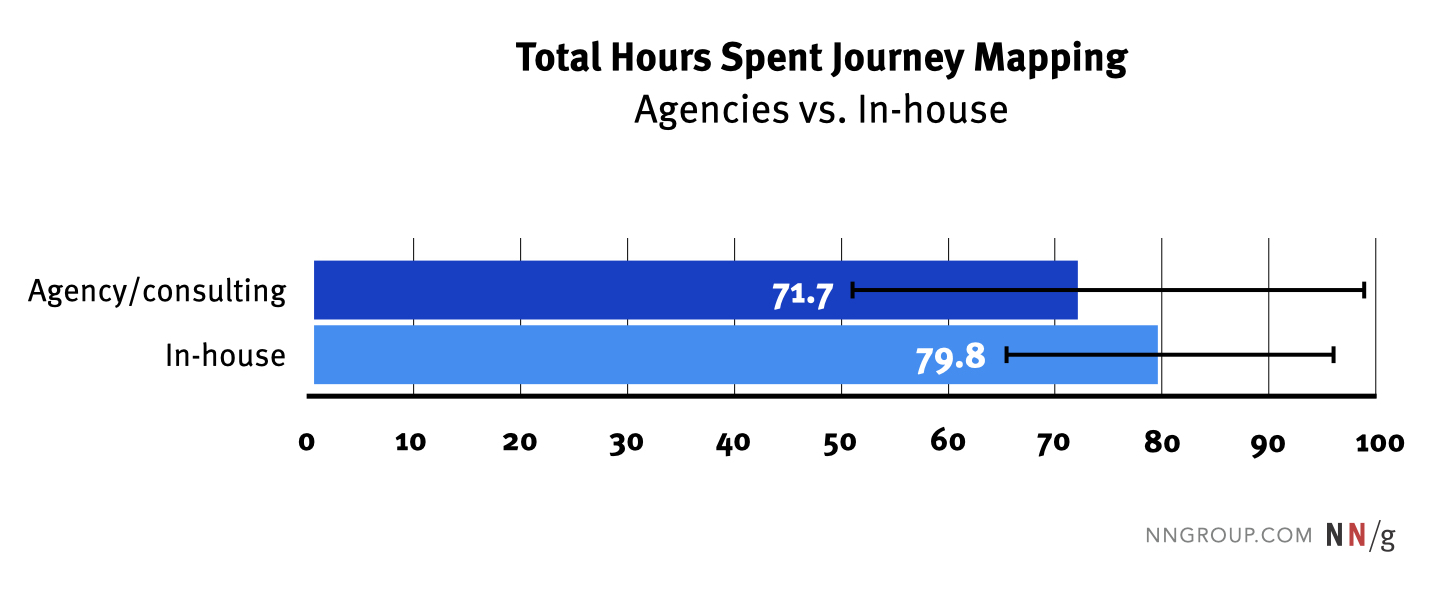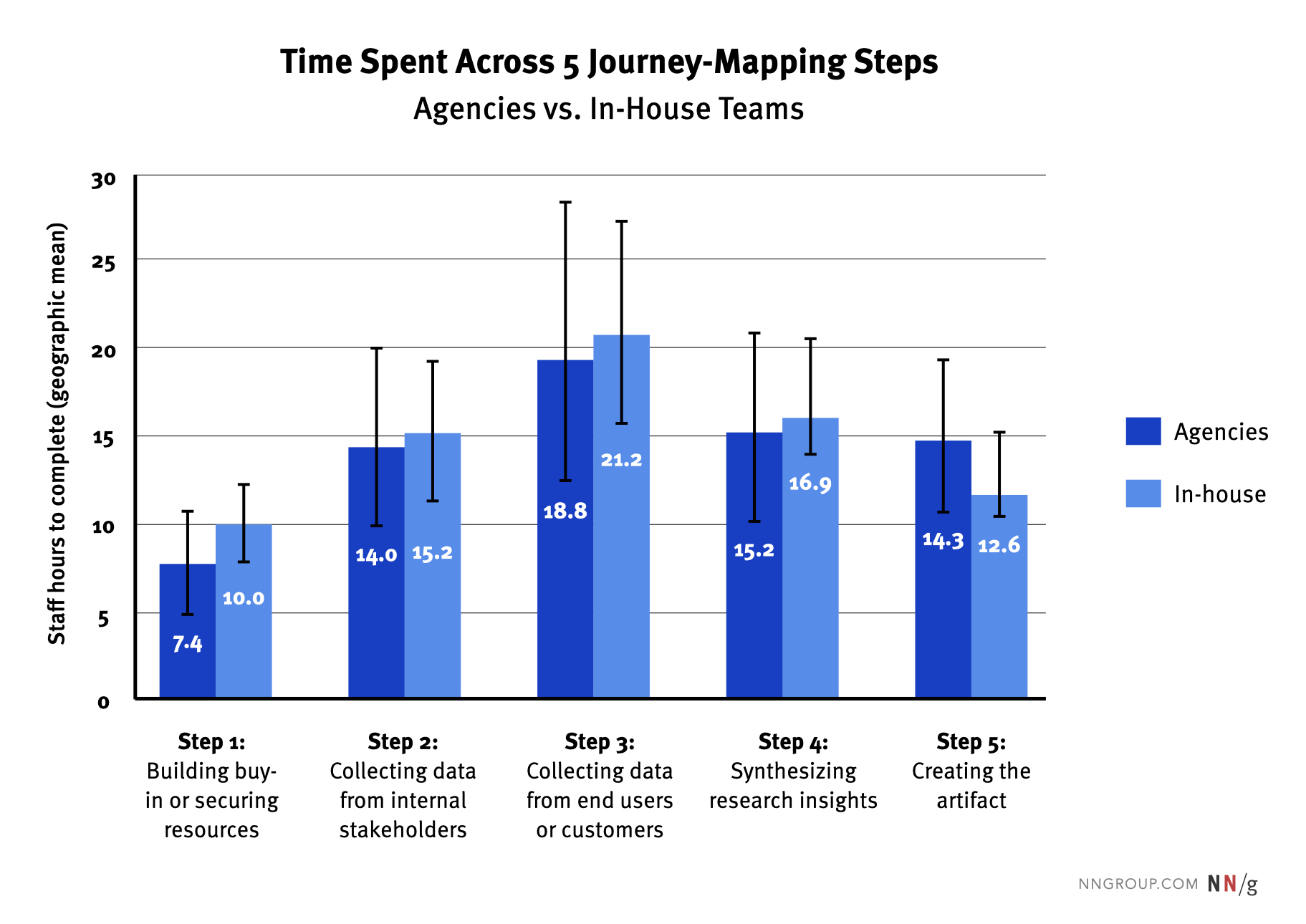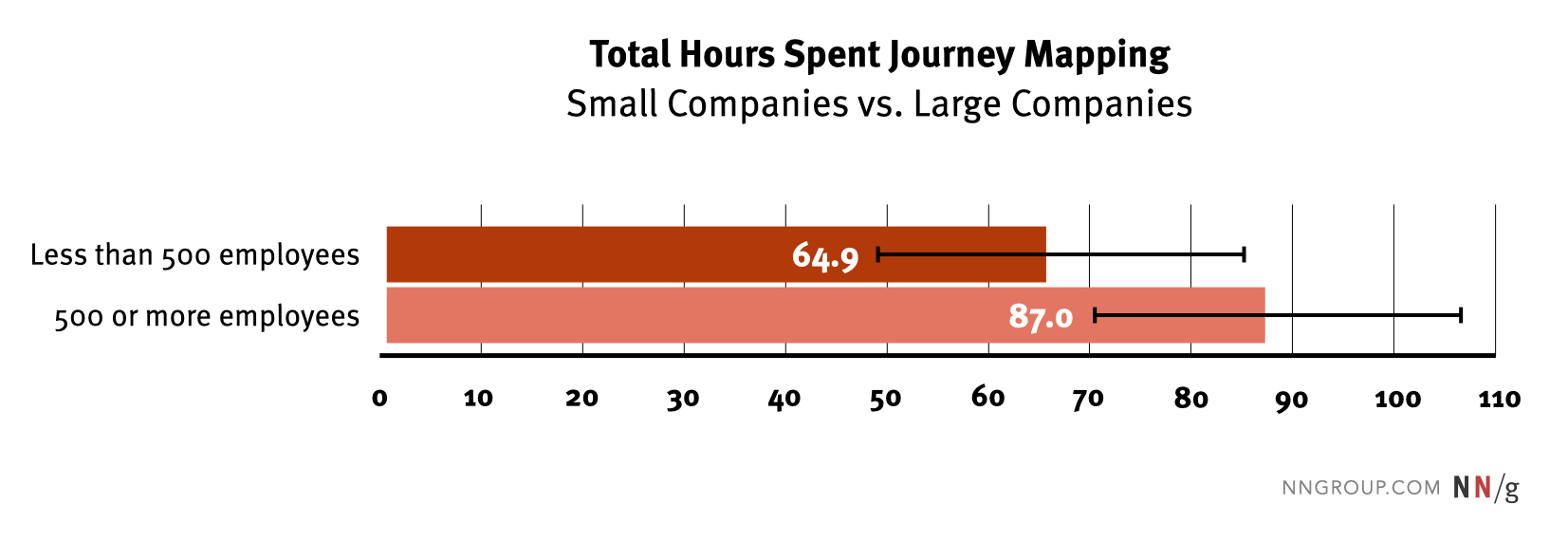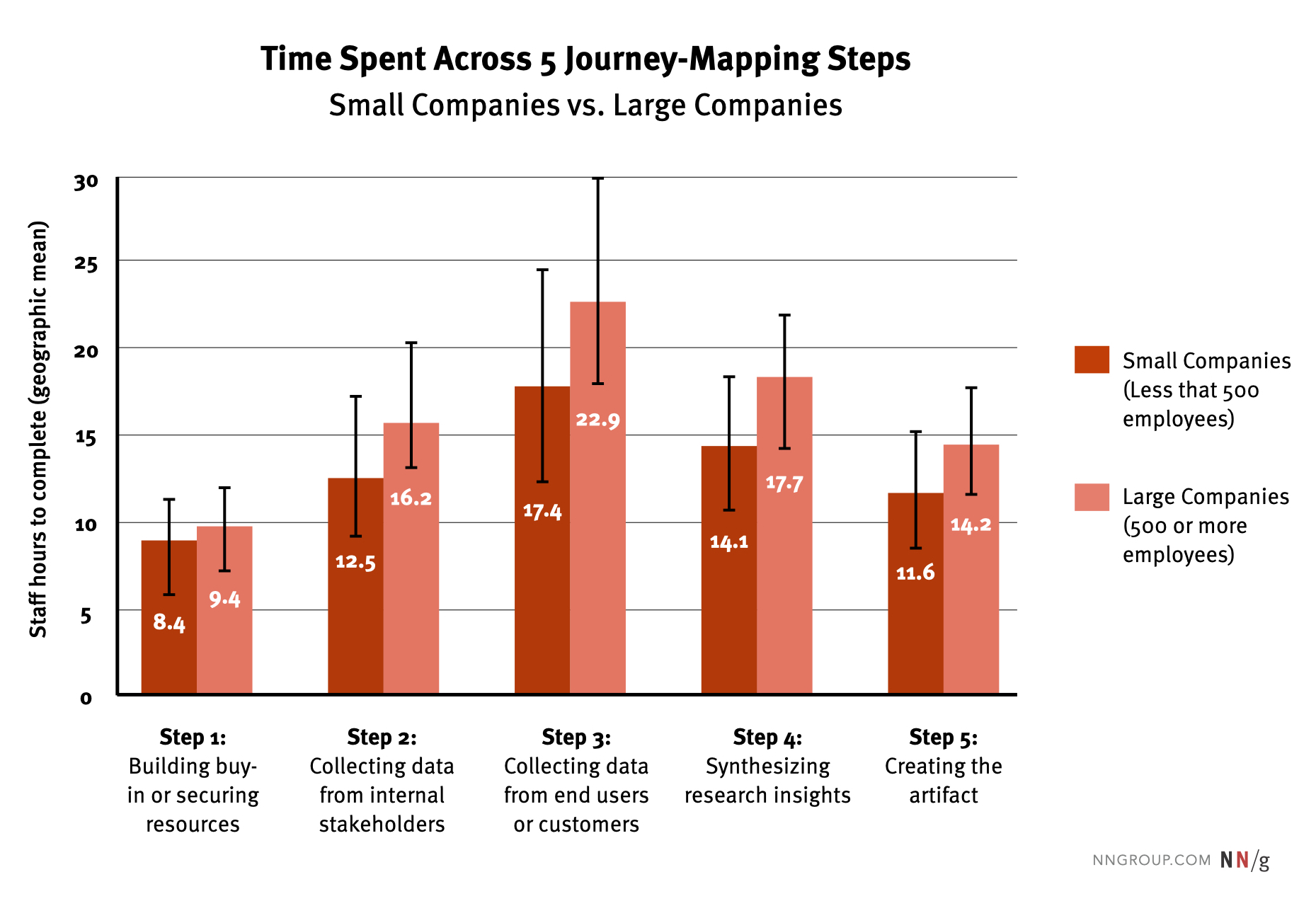Many practitioners regard journey mapping as beneficial, citing benefits of aligning stakeholders, creating a shared product or UX vision, and revealing gaps and opportunities in overall user experience. However, there’s also a pervasive perception that journey maps are time-intensive and resource-intensive. Are their benefits worth the time they take to create?
We surveyed 343 practitioners who create and use journey maps in order to understand typical journey-mapping approaches, including how many total staff hours go into creating journey maps.
Specifically, we asked practitioners how much time was spent in their last journey-mapping project across the 5 key steps of a journey-mapping initiative:
- Building buy-in or securing resources
- Collecting data from internal stakeholders
- Conducting external user or customer research
- Synthesizing research insights
- Creating the artifact (i.e., the journey map)
Typical Time Spent Journey Mapping
The mean number of hours reported in our study across each of the 5 steps is shown in the chart below. Participants reported spending the most time conducting external research (20.6 hours) and synthesizing that research (16.4 hours) and the least time building buy-in or securing resources (8.9 hours). (Note that the means reported are geometric rather than regular averages to account for the skewed distribution of the reported times.)

The mean reported for the total process of creating a journey map was 73.8 hours — just under 2 full dedicated weeks (assuming a typical work week of 40 hours).
When data is segmented by the type of organization, size of the company, and journey-mapping approach taken, some interesting differences in reported time spent are revealed (though none of these findings were statistically significant):
- Agencies vs. in-house teams: In-house practitioners reported spending slightly more time creating journey maps than agency practitioners; however, agency practitioners spent more time creating the artifact.
- Large vs. small companies: Practitioners from large companies reported spending more time on the overall journey-mapping process than practitioners from small companies. They also spent more time in every individual phase.
- Research-first vs. hypothesis-first approach: Practitioners using a hypothesis-first approach spent more time overall on the journey-mapping process than those using a research-first approach.
Agencies vs. In-House Teams
In our study, in-house practitioners reported spending slightly more time on the overall process of creating journey maps than practitioners in agency environments (a geographic mean of 79.8 hours vs. 71.7 hours), though this finding was not statistically significant.

Despite spending less time on the process overall, agency practitioners reported spending more time creating the artifact compared to in-house practitioners. In-house practitioners reported spending more time on all other steps, including building buy-in, collecting both internal and external data, and synthesizing research insights.

The fact that both in-house and agency practitioners reported somewhere around 20 hours collecting data from end users could suggest that a reasonable rule of thumb is to prepare to spend at least half a dedicated week on this step, regardless of environment.
Small Companies vs. Large Companies
We might expect larger organizations to spend more time on journey mapping because they may have more formalized policies and approval processes that slow them down, whereas smaller organizations may be able to move faster due to lean approaches. In our survey, practitioners from large companies (500 or more employees) reported spending 87 hours on average on the overall journey-mapping process, compared to the 64.9 hours reported by practitioners from small companies (less than 500 employees). However, this finding was also not statistically significant.

Practitioners at larger companies reported spending more hours across all 5 steps of the journey-mapping process.

Notably, practitioners from both large and small companies reported spending a fair amount of time securing buy-in and resources. This finding is a reminder that a larger organization or team does not necessarily equal a higher level of UX maturity! Regardless of company size, practitioners should plan to spend a fair amount of time socializing the project and educating stakeholders on journey mapping’s merit.
Research-First vs. Hypothesis-First Approach
When creating a journey map, there are 2 high-level approaches for how to begin.
- The research-first approach begins with a designated period of primary user research led by the UX or design team; the research is later consolidated into a map.
- The hypothesis- or assumption-first approach begins with a workshop where a crossfunctional team makes use of existing knowledge in order to create an assumption map or hypothesis map.
In our study, practitioners using a hypothesis-first approach reported spending more time on the journey-mapping process overall than those using a research-first approach. This finding was not statistically significant, however.

It's also worth noting that in the end, practitioners using the hypothesis-first approach reported that they did not save any time overall by not conducting initial user research (the difference in reported times between hypothesis-first and research-first approaches was not statistically significant). In fact, practitioners who used a hypothesis-first approach tended to report more time on every step throughout the journey-mapping process. These findings do indicate that skipping initial user research that could greatly inform the mapping process is not necessarily a sound approach for cutting down the overall project timeline — at best, organizations who use a hypothesis-first approach spend the same amount of time (if not more) than those using a research-first approach.

Conclusion
So, is creating journey maps worth the effort? It’s up to you to decide if spending the typical 2 weeks investment will pay off.
The fact that none of the comparisons outlined in this article (agency vs. in-house, large vs. small companies, and research-first vs. hypothesis-first approach) resulted in statistically significant differences likely means that there is no gold standard for determining the “right” amount of time for each step. Use this research to help decide whether to invest in journey maps, to what degree, and using what approach.




